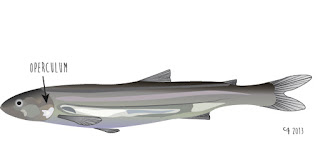 |
| Sunset outside my bedroom window |
Even down south in the lower 48, there are noticeable
differences in day length in the winter versus the summer. Days are longer in
the summer, shorter in the winter. I used to look forward to Louisiana summer
days when I could stay out waterskiing until 7:00 at night. I’d have just
enough time to come in to shower and relax my tired muscles, then walk back out
to the seawall to watch the sunset around 9:00. These hot summer days were very
different those cold winter days of high school, walking in from school at 4:00
and it already starting to get dark outside.
So what is the deal with the changing day lengths throughout
the year anyway? Why do we here in southeastern Alaska get mostly dark with a few hours of light in the winter, and vice versa
in the summer? Why do the poles get 24 hours of one or the other? Why is it
less noticeable as you approach the equator?
The earth is leaning. The axis around which it spins is
tilted. Towards the sun, away from the sun, you ask? Well, that depends on what
time of the year it is.
We earthlings make one complete trip around the sun each year.
During the summer, the northern hemisphere is leaning towards the sun. By the
time we’ve made it to the other side of the sun in the wintertime, the northern
hemisphere is leaning away from the sun. The result of this lean is that
certain parts of the globe spend a little more time in the shade than others,
while others spend a little more time in the light. This is a hard thing to
visualize, so let’s turn to some pictures.
 |
| Shadow zones in the winter time |
In the picture above (set in our winter time), you can see that
the North Pole stays in the shadow of the earth. Areas a little lower, like
Alaska, skim into the light just long enough for the sun to peak over the
horizon. This trend continues to weaken as you approach the equator. The equator gets 12 hours of day every
day, all year. Once you get south of the equator, then you’re spending a more
and more time in the sun until you approach the South Pole. It’s summer there,
getting 24 hours of light. But just wait 6 months, and the roles will have
gradually reversed.
 |
| Light zones in the summer time |
We’re in that role-reversal phase right now. The summer
solstice, June 21, marks the northern hemisphere’s maximum “lean” towards the
sun- the longest day of the year. After we get past that, the days will start
getting shorter as we head back into the dreaded shadow zone. Living so far
north, this time of the year drives me to embroider after work and watch Lord
of the Rings, in my very own vitamin-D depraved Gollum-like transformation. By
the time March rolled around this year, I was turning my nose up at taters and
losing pigmentation.
Luckily, sleep masks and blackout curtains help during the summer. Socializing and reading help to resist the call of the One Ring in the winter. As they say, life is a series of tradeoffs.
Luckily, sleep masks and blackout curtains help during the summer. Socializing and reading help to resist the call of the One Ring in the winter. As they say, life is a series of tradeoffs.






